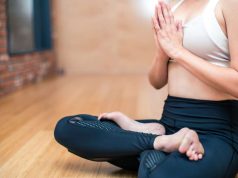Modern society brings with it a fair number of stresses. In some way, all of us deal with stress, tension, and anxiety. Some cope with it better, while others silently suffer. Regardless of what your stress may be, leaving it unchecked could cause problems in your everyday life. Uncontrolled anxiety can creep up on you and make everyday life difficult. Before your issue turns into a chronic disorder, check your stress and alleviate the symptoms. Often we are so busy in the professional lives that we pay no heed to our mental wellbeing.
We understand that de-stressing is easier said than done, which is why we are here to help you.
Contemporary psychology has given rise to a form of meditation known as mindfulness. Mindfulness focuses on being present in the moment and experiencing your surrounding by thoughts, feelings, and most importantly, bodily sensations.
Therefore, here are three great mindfulness exercises for your mental health.
The Raisin Exercise
An effective way to de-stress and bring yourself back into the present moment is through a mindfulness exercise. It is relatively common for students who feel overworked to use something like this. Primarily for medical students who spend hours reading through coursework. Therefore whether you’re studying on campus or pursuing an online master in health administration, this one is for you.
Focus on a piece of food (usually a raisin). Assume that you have never eaten one before in your life. Smell it, feel it, flick it and listen to the dense sound. Look at it, the creases and ridges. Notice how it is shriveled up; imagine what it would look like if it weren’t. Then slowly chew on it, experience the raisin’s taste, and appreciate it for all it is.
It’s a good idea to do this in a comfortable environment where you won’t be disturbed. You can use any small food. Just make sure that you are mentally present in the moment and free from distractions. It is an old technique that induces positivity and releases endorphins.
Leaves On A Stream
When de-stressing, it’s common for thoughts to emerge in your mind, impeding the process. Therefore, we encourage this exercise.
Imagine you are watching a stream or creek. The water is flowing; you can hear it. You can feel the mist and smell of the earth. Set the pace of the water as you think it should be. It doesn’t have to be fast, nor too slow. Now imagine leaves floating by on the water. Gently, flowing away till you can’t see them anymore. When you have successfully created the image in your mind and set the environment’s pace, you can move onto the next step.
Imagine your thoughts sitting on the leave and then gently flowing away. Good, bad, or mundane, it doesn’t matter. Whatever comes into your mind, set it on the leaf and just let it flow away. Take about 15 seconds for each thought. After a while, your negative thoughts will start to emerge. Place them on the same leaves and let them flow away with the current.
Once you feel calmer after this exercise, return to reality and get on with your day.
Relax And Make It Up Along The Way
Find a comfortable room where you can be alone in a peaceful environment. Once you are ready, it’s time to create your mindful exercise.
- The recurring theme in mindfulness is a sensation in your surroundings. Consider closing your eyes and lying down on a bed. Feel the breeze if there is any. Listen to the sounds of the birds. Appreciate the unique smells in the room, like that of your fresh bedsheets. Notice how the sheets feel on your skin. Notice how your eyelids flicker when you struggle to keep them closed.
- After that, monitor how your body feels when you breathe in and out. You should notice yourself sinking deeper into the bed when you exhale. Scan yourself from head to toe. Flex your muscle when you breathe in, and relax them when you breathe out. Do this with each muscle group. Slowly work your way from the top of your head to your toes. Take your time with each body part.
When you are ready to return, pause the bodily awareness and return to experiencing it through your senses. After internalizing the environment, you can get up and return to your activities.
Conclusion
These exercises can significantly help reduce stress in your everyday life and improve your mental health. There is a misconception that meditation is helpful only when you are stressed. But it would help if you tried it sometimes so that general stressors don’t get you down.
With that said, these exercises could greatly help you in your everyday life and work towards boosting your mental health. It’s essential to take time out for yourself and live in the moment. These exercises can bring you in touch with reality and change how you think about the here and now.




